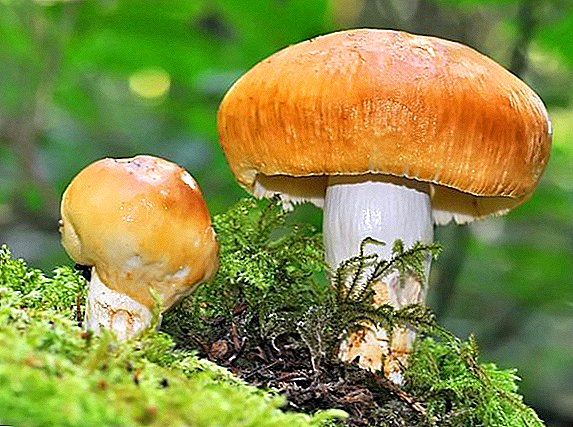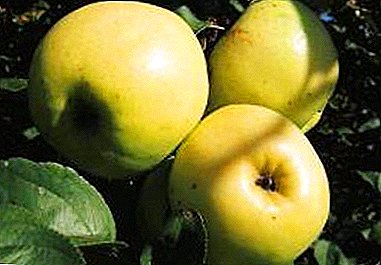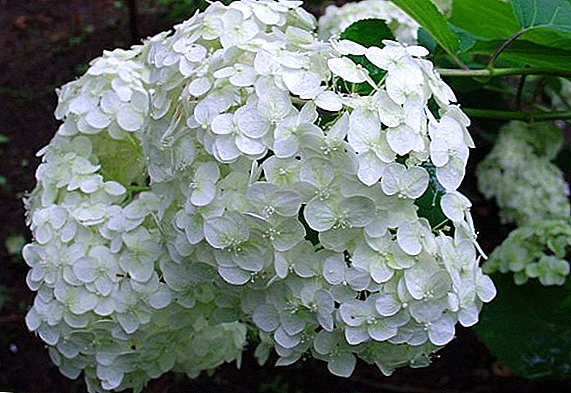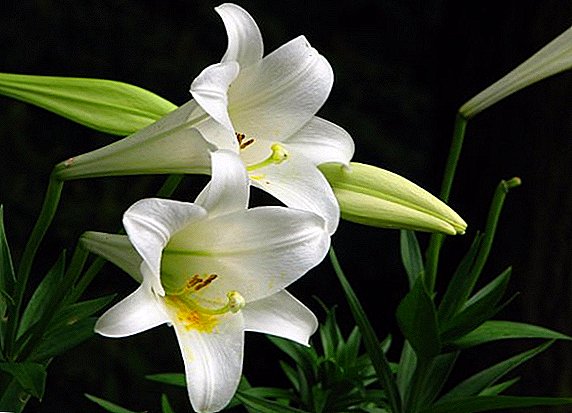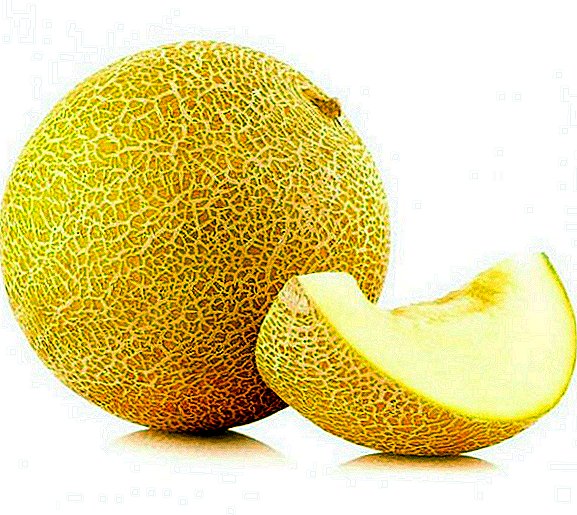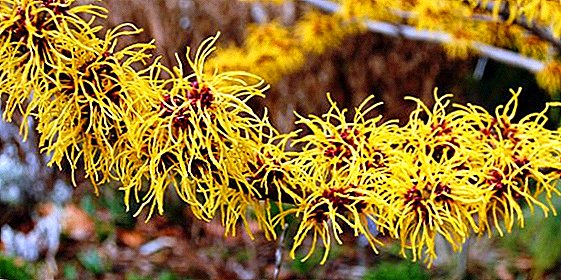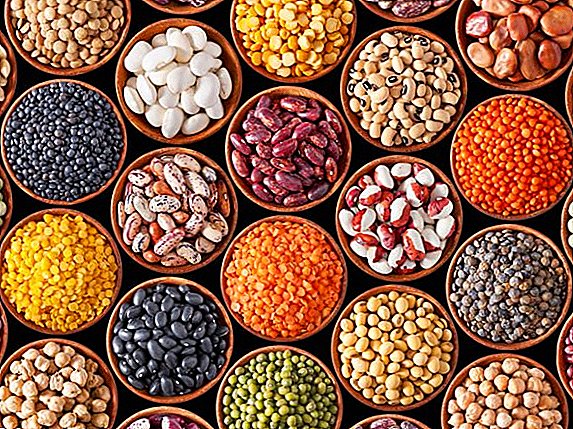 In recent decades, legumes have firmly taken leading positions among the most consumed foods: they have become the basis of nutrition not only for vegetarians, but also for athletes, as well as people who adhere to the correct principles of nutrition. What are useful legumes, how they are used, with which they are compatible - we will consider in more detail.
In recent decades, legumes have firmly taken leading positions among the most consumed foods: they have become the basis of nutrition not only for vegetarians, but also for athletes, as well as people who adhere to the correct principles of nutrition. What are useful legumes, how they are used, with which they are compatible - we will consider in more detail.
The benefits of legumes
Bean products have a host of beneficial properties. The main ones are:
- improvement of gastric microflora due to the presence of plant fiber;
- anti-inflammatory properties - prevent the formation of even malignant tumors;
- blood purification, regeneration of blood cells due to folic acid;
- lowering cholesterol levels, improving heart muscle performance;
- antimicrobial and protective functions: successful struggle with cold, virus, cough;
- protein supplier - give the body the maximum amount of vegetable protein with a minimum fat content;
- anti-aging and anti-aging functions: improving the condition and color of skin, hair, nails due to manganese.
Legumes are sources of nutrients that are necessary for the proper functioning of the body. Check out legumes such as red clover, clitoria flower, soybeans, beans, peas, dolichos (hyacinth beans, Egyptian beans), broom, bobster, peanuts, mouse peas, acacia, cercis, vetch, and sweet peas.

With such obvious beneficial properties, legumes can also adversely affect the body. It is not recommended to use such products to people suffering from gout, rheumatism, arthritis, having chronic diseases of the stomach.
Important! Legumes are quite heavy food that is digested for a long time: in order to avoid the appearance of heaviness in the stomach, chew the bean products thoroughly and subject them to proper heat treatment so that they soften well and lose the hardness and rigidity of the structure.

Fruit representatives of legumes
All leguminous plants are divided into 2 types: fruit (forming fruits, which are used in food), and fodder, which do not have fruiting. In total, the family of legumes includes more than 12 thousand species of plants.
Peanut
One-year small plant, bearing fruit, which is not only eaten, but also used for industrial purposes. Delicious butter, margarine and chocolate are made from this nut. The caloric value of 100 g of peanuts is 553 kcal, the content of proteins and fats is also high: 27 g and 45 g, respectively. The carbohydrate component of 100 g of peanuts is 9.8 g. During heat treatment and drying of peanuts, its caloric content increases: from 600 to 800 kcal. With the frequent and excessive use of peanuts, obesity may appear. The chemical composition of peanuts is as follows:
- vitamins: B3, B1, B9, B5, B2, B6;
- phosphorus;
- manganese;
- potassium;
- calcium;
- copper;
- zinc;
- selenium;
- sodium and others

The advantage of peanuts is really great: it has protective and antioxidant properties, removes toxins, has a small choleretic effect, enhances metabolic processes, eliminates insomnia and nervous overexcitement. In addition, it gives strength and increases the sexual function of men and women. Peanuts go well with vegetables (with the exception of tomatoes), greens, vegetable oils. Poorly compatible with other nuts, honey, pasta, bread, dairy products and other high-calorie foods.
Feedback from web users about the benefits of peanuts

I love walnuts very much, but for the reason that there is more gimp with them: you have to prick them, pull out the kernels, which is not always convenient, I prefer to buy peanuts for myself more often or as it is also called peanuts, and I prefer roasted peanuts . I also love it when peanuts are used in baking.
With all that peanuts are very useful, we should not forget that everything is good in moderation and it should also be borne in mind that some people have an allergy to it.
You can not absorb peanuts in large quantities and this should be remembered especially for those who have problems with blood vessels, as peanuts tend to thicken blood, which can lead to big problems.
Many people know the peanut property has a positive effect on immunity during interseasonal colds.
In addition, you should know that the use of these nuts has a good effect on our skin, because it contains vitamins B1, B2, which have a beneficial effect on the skin.

Beans
Annual plant native to South Asia. The fruits are fleshy, they can be of different shades: from light green to black. Caloric content is only 66 kcal per 100 g. During heat treatment, calorie content is lost: for example, stewed beans are only 57 kcal per 100 g. The ratio of BZHU is 6.2: 0.1: 8.5. Composition:
- cellulose;
- manganese;
- phosphorus;
- magnesium;
- selenium;
- sodium;
- folic acid;
- vitamins C, D, B5, B1, B2, B6, A;
- fatty acids, etc.

The beneficial properties of beans include: a significant increase in immunity, elimination and prevention of anemia, an anti-tumor effect (eliminates cancer cells), elimination of toxins and harmful radicals, improved sleep and sedation, saturation of bone tissue with protein and treatment of osteoporosis, improvement of vision, improvement of heart function, elimination of caries and much more. Raw beans do not use beans: they are rather solid textures that the intestines cannot digest.
In addition to the beans, the following plants are also used in diseases of the cardiovascular system: carrots, radishes, calendula, hawthorn (glod), silver goof, basil, eggplants, aconite, filbert, gumi (multi-flowered mulberry) and yasenets (burning bush).Beans go well with vegetable oils, sour cream, grains. But with products containing a large amount of starch (potatoes, bakery products, etc.) they should not be consumed. Beans are used not only in cooking, but also in traditional medicine: for example, a decoction of beans is used as a laxative, and applying boiled beans in milk is the best remedy against boils and ulcers.

Did you know? The Mediterranean countries are considered the birthplace of all leguminous crops, and their age amounts to more than 5 thousand years - the first references to leguminous plants were found in the scrolls of the ancient Egyptians who lived over 3 thousand years BC. er
Peas
A very tasty and nutritious product that is used both in the food industry and for cosmetic purposes: natural antioxidant substances in its composition improve the complexion, restore damaged hair. It is considered a dietary product due to the low fat content: the caloric content is only 56 kcal per 100 g. The ratio of BJU is 5: 3: 8.4.
In cosmetology are also used: amaranth, dogwood, enoter, marigold, nasturtium, periwinkle, radish, bird cherry, linden, peony, walnut, silver sucker, parsnip and garden savory.The composition of the pea also contains such elements:
- calcium;
- magnesium;
- molybdenum;
- sodium;
- boron;
- silicon;
- zirconium;
- manganese;
- selenium;
- fluorine and many others.

Due to such a rich set of components, peas have extensive beneficial properties: a diuretic effect, normalization of metabolic processes, reduction of the risk of malignant tumor formations, blood saturation with glucose, elimination of seizures and epileptic seizures, improvement of the stomach, etc. Such carbohydrate product as peas, you can not eat with other carbohydrates: baked goods, sweets, potatoes, as well as some fruits (orange, watermelon and kiwi). Best of all this product is combined with fats: vegetable and butter, sour cream, as well as greens and grains.
Bathing vessel, calendula, sage (salvia), meadow grass, linden, chervil, lyubka double, cress, yucca, dodder, viburnum buldenezh, goldenrod, onion-slick, peanut, oregano (oregano) and kale cabbage, as well as peas, apply with problems with the stomach and digestive system.
Chickpea
Chickpea, or chickpea, especially spread in the Middle East, and in terms of popularity, it takes 3rd place after peas and beans. Chickpeas are an integral part of such traditional oriental dishes as falafel and hummus. It is quite high-calorie: 365 kcal per 100 g of raw product. Contains a very large amount of protein - 19 g (per 100 g). Fat a little less - 9 grams, but the indicator of carbohydrate just rolls over: 61 g! Such nutritional value led to the fact that chickpea today is a staple in vegetarianism. 
The composition of chickpeas is:
- vitamins - A, P, B1, PP;
- potassium;
- calcium;
- sulfur;
- phosphorus;
- chlorine;
- boron;
- titanium;
- zinc;
- manganese;
- starch;
- fatty acid;
- iron, etc.

Chickpeas are poorly compatible with fish, as well as some sweet fruits: melons, watermelons, oranges. It combines very well with greens and green vegetables, vegetable oils. Excessive use of chickpeas can lead to allergic rashes, gas and cramps in the stomach.
Soy
None of the products of the legume family caused so much controversy and disagreement as soy. Of course, the gene modification of this product has influenced its qualitative chemical composition and effects on the body, but it cannot be denied that soy has a lot of useful properties. These include:
- lowering cholesterol;
- removal of toxic substances and slags;
- normalization of pressure and heart rate;
- tissue repair at the cellular level (in particular, the renewal of brain cells);
- fat metabolism and improvement of metabolic processes in general;
- prevention of glaucoma, muscular dystrophy, osteoporosis, arthritis and many other ailments.

One of the negative properties of the use of soybeans is the ambiguous effect on the thyroid system: for example, in some cases, soybeans contribute to the enlargement of the thyroid gland and the development of cancer cells. It is not recommended to use soy for pregnant women, children and people suffering from urolithiasis.
Soybean has concentrated a large number of useful elements in its composition:
- calcium;
- phosphorus;
- iron;
- magnesium;
- iodine;
- manganese;
- selenium;
- molybdenum;
- potassium;
- aluminum;
- nickel;
- zinc;
- cellulose;
- folic acid;
- vitamins A, B1, B2, C, E, B5, B6.

Thanks to this set of components, soy is actively used in medicine: it helps to treat such serious illnesses as diabetes and atherosclerosis.
The caloric content of soybeans per 100 g of the product is 446 kcal, and the ratio of BJU is 36.5: 20: 30. Soy contains almost the largest amount of protein among vegetable crops, which made it possible to include it in sports and dietary nutrition.
Like other legumes, soy is best combined with greens and vegetables and poorly compatible with bakery products, fatty meats and citrus fruits. 
Feedback from web users about the benefits of soy

Lentils
Lentil is one of the most ancient products used on our planet - according to historical data, lentils were used in the III century BC. er There are many varieties of lentils, it can be of various shapes and colors: from milky white to purple and black. The caloric content of the raw product is 106 kcal (per 100 g). Fat lentils practically does not contain, which allows people to use it in large quantities on a diet. The ratio of BZHU lentils is 25: 1.7: 46. 
In addition, it includes:
- vitamins - A, B1, B2, B5, B9, PP, E;
- potassium;
- magnesium;
- calcium;
- sodium;
- sulfur;
- phosphorus;
- chlorine;
- aluminum;
- boron;
- fluorine;
- zinc;
- digestible sugars;
- essential amino acids, etc.
Like lentils, the following plants also have a positive effect on the nervous system: peony, white (quinoa), buttercups, dried bananas, belladonna, acai berry, jaundice grass, chicory, wormwood, and hellebore.

Beans
Beans are the product, which can not be eaten raw - it has some toxic components that are destroyed only by heat treatment. Contains many useful macro and micronutrients, vitamins and amino acids:
- potassium;
- sodium;
- magnesium;
- calcium;
- iodine;
- selenium;
- zinc;
- lysine;
- arginine;
- vitamins of groups B and C;
- tryptophan others

The caloric content of red beans is 102 kcal, white - 292. 100 g of the product contains 7 g of protein, 17 g of carbohydrates and only 0.5 g of fat. Beans effectively eliminate intestinal infections, tumor formation, treat stomach disorders, normalize metabolic processes, stimulate adrenaline production, control cholesterol and blood sugar levels, eliminate wrinkles and improve skin condition. For medical purposes, beans are used in the form of decoction to normalize food processes and eliminate fatigue and stress.
Thus, with the help of beans, you can not only prepare a tasty dish, but also significantly improve the body. Best of all, haricot harmony with fresh herbs and vegetables, fragrant herbs, vegetable oils. It is badly combined with fish, fruit and fat nuts.
Important! People who have bloating, have problems with digestion, as well as older people and young children should eat beans in minimal doses or be completely excluded from the diet: beans are heavy food that is digested for a long time, and a weakened stomach is hard to cope with. As a result, stagnation and rotting of food in the stomach, constipation and other problems may occur.
Feed Bean
Fodder legumes form the basis of nutrition for livestock and agricultural cattle: animals not only quickly become saturated with such crops, but also acquire useful trace elements and substances.
Vika
This annual plant is used as a siderat, feed crop and honey plant. Very early plant that allows you to use it in large quantities for different needs. As a vetch fertilizer, fodder heals the soil, loosens it and clears off pests, scaring them off with its smell. As a fodder crop, it is the most valuable source of food for cattle (nutritionally superior to peas and clover). 
In addition to this, wiki feed includes:
- proteins;
- starch;
- saccharides;
- phosphorus;
- iron;
- zinc;
- vitamin C;
- селен и пр.

Клевер
This bean representative has many varieties (more than 200 species). Clover is an important supplier of protein, so it is massively used for feeding livestock. Clover is used to make flour, silage, and also give animals raw. Like a honey plant, clover has no equal - honey from clover is very tasty and fragrant.
The clover includes:
- squirrels;
- essential oils;
- fatty acid;
- flavanols;
- organic acids;
- vitamins of groups E and B;
- calcium;
- phosphorus;
- iron, etc.

In addition to feed destination, clover is also used for homeopathic purposes, is actively used in traditional medicine. Its anti-inflammatory, expectorant and wound-healing effects are beneficial for both people and animals.
Feedback from web users about the benefits of clover


Lupine
The second name of this plant is "wolf bean": this name was born due to the ability of lupine to absorb all the useful substances and resist various diseases and pests. The main purpose of lupine is food for wild and domestic animals. In addition, it is an excellent honey plant and a decorative element: its bright large buds will be a worthy decoration of the garden plot. Lupine consists of the following substances:
- polyunsaturated fatty acids;
- essential oils;
- manganese;
- iron;
- phosphorus;
- essential amino acids;
- proteins;
- squirrels;
- vitamins C, B, E.

Today there are more than 150 species of lupine, with 12 of them growing only on the sea coasts. Lupine is also used as green manure, it is included in the composition of drugs, it is used as food for fish.
Did you know? In Japan and India, lupine is included in traditional local dishes: its grains are added to tofu cheese, miso and soy sauce, they make ice cream based on lupine oil, used as a side dish to meat.
Alfalfa
Alfalfa is used not only as a fodder plant: gallstone diseases, disorders of the urinary system, high cholesterol and blood sugar, heart failure and many other ailments are actively treated. 
Such a wide range of beneficial effects is caused by a rich set of chemical components and nutrients:
- vitamins of groups B, C, E, D;
- proteins and carbohydrates;
- essential oils;
- saturated oils and organic acids;
- anthocyanins;
- bioflavonoids;
- magnesium;
- silicon;
- iron;
- zinc;
- phosphorus;
- manganese, etc.

Alfalfa has been widely used in agricultural technology and rural industry: it is the basis of feed for cattle and small livestock. In the culinary field, alfalfa is also used, albeit on a smaller scale: it is added fresh to salads and soups as a spice.
Important! People suffering from lupus erythematosus, or taking drugs for blood clotting, to use alfalfa is not recommended.
Fenugreek
Fenugreek, or Shambala, has been used since time immemorial as a fodder crop and medicinal plant. For centuries, fenugreek has successfully cured heart and vascular diseases, breast cancer, stimulates milk production during lactation, eliminates hair problems (baldness, loss, severe dryness and brittleness), normalizes blood sugar levels and much more. This is one of the most useful plants among all existing ones. 
It consists of the following elements:
- iron;
- magnesium;
- phosphorus;
- potassium;
- copper;
- zinc;
- as well as vitamins B6, B9, B12.

Did you know? Since ancient times fenugreek was used as a stimulant: Roman gladiators and Greek athletes drank its broth to give strength and vigor to the body. In India, fenugreek is especially popular for the treatment of women's diseases and hormonal disorders, and in Arab countries it is believed that the use of fenugreek heals the nation.
Sainfoin
This perennial plant is indispensable at the dacha: it is not only a good fodder crop and source for harvesting hay (it has a high value in the agricultural sector), but also an excellent honey plant. Honey indices of sainfoin range from 120 to 220 kg per hectare - the honey turns out light yellow, with a very pleasant aroma. Eating hay from sainfoin favorably affects cattle health, and milk yield increases significantly. 
The composition of sainfoin includes such components:
- squirrels;
- carbohydrates;
- vitamins B2, B6, C, P, D;
- flavonoids;
- magnesium;
- manganese;
- boron;
- iron;
- fluorine;
- phosphorus, etc.

Saline is also used in alternative medicine: it treats disorders of the reproductive system of men and women, it helps to increase immunity and resistance to viruses, reduce blood sugar levels, increase hemoglobin, etc. It is noteworthy that this herb does not have any contraindications: it is absolutely harmless to both people and animals.
Considering the different types and varieties of legumes, you can come to this conclusion: regardless of the scope of the destination (feed culture, spice, diet, source of honey, etc.), legumes have a huge benefit. They not only heals the human body, but also are a useful food product. Today's pulses are indispensable not only in the culinary industry, but also in medicine, cosmetology, agricultural technology, and agriculture.



